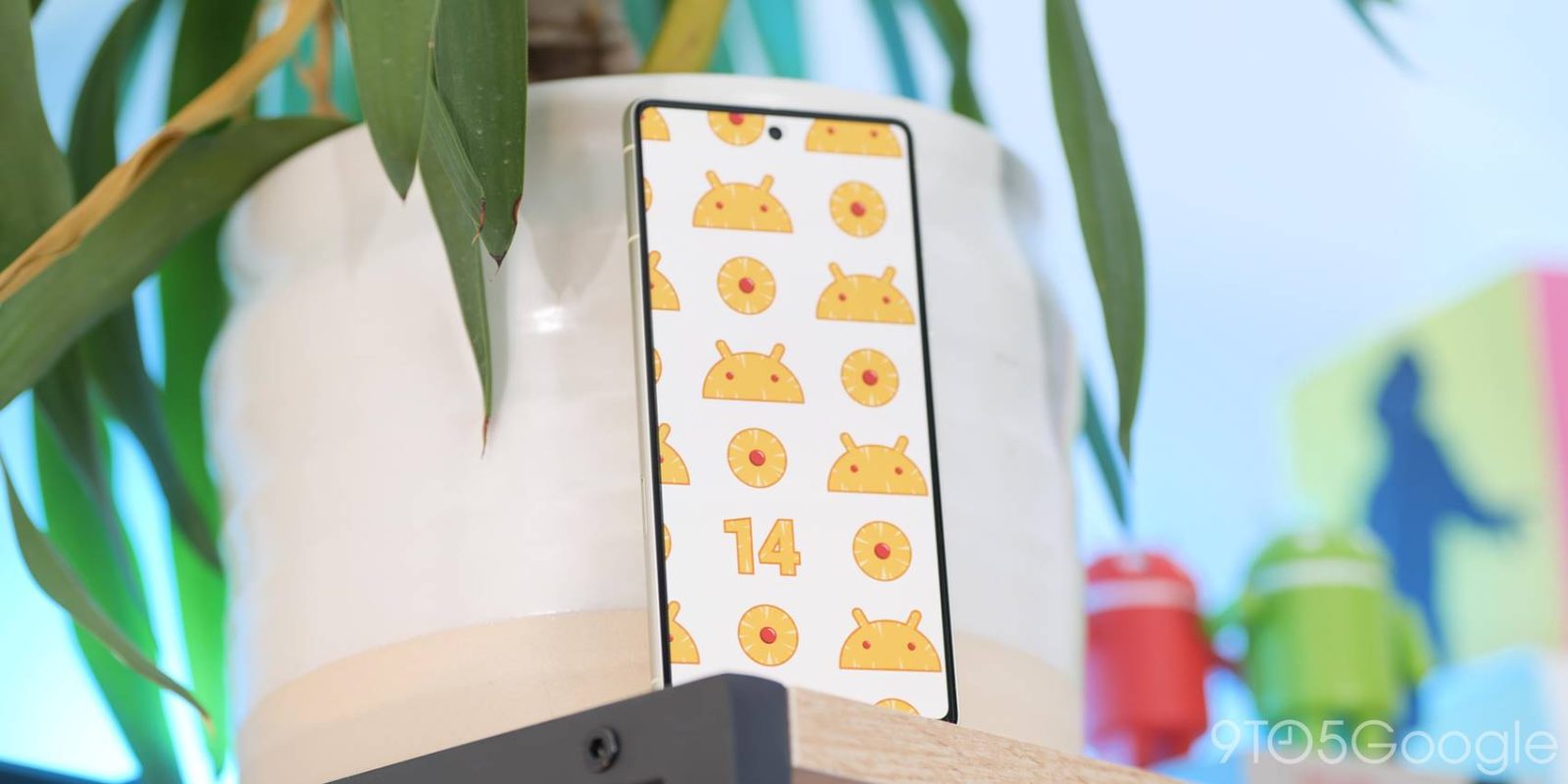
Right on schedule, Google has just released the very first developer preview of Android 14 for Pixel smartphones. Here’s how to install it – if you dare.
Should I install the Android 14 developer preview?
The first release of Android 14 is not intended for the general public and is rather aimed at developers. The preview is designed to allow developers to test their various apps on the next release of Android to optimize and adopt new features in time for the public release later in 2023.
If you are not a developer, we recommend that you do not install the Android 14 developer preview, especially if you intend to install it on a smartphone you use on a daily basis. There’s always a chance in these early builds that important features are broken or that stability is less than ideal.
What Pixel phones are compatible with Android 14?
Google supports all of its Pixel smartphones for three major system version updates, with Android 14’s developer preview only available for devices that will get the final update later this year. As of February 2023, Google is making Android 14 available to the following devices:
- Pixel 4a 5G
- Pixel 5
- Pixel 5a
- Pixel 6
- Pixel 6 Pro
- Pixel 6a
- Pixel 7
- Pixel 7 Pro
The Pixel 4 series, which recently received its final update, won’t be eligible for an update to Android 14. The Pixel 4a also isn’t eligible. Google Pixel 3, Pixel 3a, and other prior releases also won’t be updated.
How to install Android 14 on Google Pixel
During the developer preview stage, you can only sideload Android 14 builds on Pixel devices. The update is not available through over-the-air updates. That functionality is reserved for the later beta releases. If you are not familiar with sideloading updates manually, we strongly encourage you to wait for the final release. But if you just can’t wait to get your hands on the latest and greatest, here’s how to install it.
- Download the needed files
- Boot into Recovery mode
- Navigate to ADB sideload
- Connect the handset to a computer with ADB tools installed
- Enter the sideload command
- Reboot your phone
The following process explains how to install the OTA update, not a factory image.
Download Android 14
The first step in how to install Android 14 on your Pixel is to get the files. There are two ways to do so. First, you can install a Factory Image, which wipes your phone and starts everything from scratch. Alternatively, and the way we’ll detail here, there’s an OTA file, which installs over your current version of Android without wiping your phone.
You can download the beta OTA file from Google’s Full OTA Image hosting site. That site contains OTA downloads for sideloading different updates, including Android 14, on every Pixel and Nexus device ever made, so you’ll need to scroll down to ensure you are downloading the file that associates with your device. OTA downloads are available here.
For the Android 14 developer preview, only Pixel 4a 5G, Pixel 5a, Pixel 5, Pixel 6/Pro, Pixel 6a, and Pixel 7/Pro are available. You won’t be able to install it on the original Pixel/XL, Pixel 2/XL, Pixel 3/XL, Pixel 3a/XL, or Pixel 4/XL.
Set up ADB tools
The next thing you’ll need to do is prepare your computer for ADB tools. To do this, you’ll want to download ADB drivers from Google through Android Studio or through the SDK tools independently. Personally, I usually go with the latter on Windows.
The video below explains how to install ADB on your machine.
Note: This process won’t wipe your device, but it’s good practice to back up any irreplaceable data in case something goes wrong.
Boot into recovery mode and navigate to ADB sideload
Next, you’ll boot your Pixel into Recovery mode. To do this, fully power down your handset. Then, hold down on the Power button and the Volume down button at the exact same time until you get to the Bootloader page. You will know you’re in the right place when you see an Android figure lying down on the screen.
Using your volume buttons, scroll down to Recovery mode. Select this by clicking the power button.
Alternatively, you can do this directly from your computer. Once you’ve set up ADB tools, you can enter the command adb devices into your command prompt to ensure your device is connected. From there, use the reboot recovery command to get to recovery mode without pressing any buttons.
Now, you should see a smaller Android lying down with an exclamation mark over it. From here, press the Power button and the Volume up button for about a second to fully enter Recovery mode. Releasing the Volume up button will send you into Recovery.
Using the volume buttons, scroll down to Apply update from ADB and select it with the power button. This will launch a mostly blank screen with text near the bottom directing you on how to sideload an OTA, such as this one for the Android 13 developer preview.
Start the sideload process
As long as everything is in place, you can now sideload the OTA file. On Windows, ensure your Command Prompt is directed to the ADB tools folder and type in adb sideload. If you’re on macOS or Linux, do the same thing in Terminal (use “cd” and “ls” commands to make sure your Terminal is pointed at the right folder – google it if you need help) but type in ./adb sideload. You’ll then need to insert the file name of the .zip folder you downloaded from Google and hit enter to start the process.
If everything is working properly, you should see some dialog on your computer and handset that shows the process of the sideload and installation process.
Reboot your phone
Once the OTA is done installing, you will be taken back to Recovery Mode. The last step to jump into the new update is to select the Reboot now option with your power button.
FTC: We use income earning auto affiliate links. More.



Comments